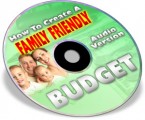Sample Content Preview
Steps to Manage Your Personal Finances Like a Pro
No matter where you are right now, you can manage your personal finances like a pro. All it takes is some understanding of how to go about it, and commitment to improving where you are lacking. It doesn’t all have to be boring either. Even if you’re working with a small budget, when you are realistic about your situation and truthful with yourself, you can come up with a plan that will work for your needs.
1. Develop a Budget
The first step to managing your personal finances is to set up a realistic budget for where you are right now. You can use something as simple as a spreadsheet, or you can use the software that your bank likely provides to help you. It’s up to you what tools you use, but the steps to developing a budget are essentially the same for everyone.
Write Down Your Net Income
Don’t worry about what you make before deductions such as health insurance, taxes, and your retirement savings contribution. Note your net income, because that is realistically what you are really working with. What you make before those deductions doesn’t really matter when creating a budget because you cannot spend any of that money that you don’t receive.
Track Your Spending
For about a month, track your spending habits. The only way to get real with yourself is to write down everything you spend money on – whether it’s cash, credit, or a debit card. It doesn’t matter if it’s one buck or 100 bucks; you need to track it and categorize it.
List all your fixed expenses first. These are items that cannot be adjusted like your rent, mortgage, car payment, utilities and so forth. Then make a separate list with variable spendings such as eating out, entertainment, groceries, and gas. If you want to do this fast, you can look at your past records on your bank statements and credit card accounts to organize it all.
Set Goals
You need to set some financial goals that you want to accomplish before you continue. You should have some short-term goals for the next year or two, some mid-term goals for the next five to ten years, and then long-term goals such as saving for retirement. Use real dollar amounts that are realistic numbers with realistic deadlines or target dates.
Write Down a Plan
Now that you know what you earn, what you spend, and what your goals are for now and the future, it’s time to write down a plan. You may realize as you’re developing the plan that you need to cancel your cable, drop to a cheaper mobile plan, or adjust your desires based on wants versus needs. You need gas to get to work, but you don’t need to watch six hours of TV each evening.
Adjust as You Go
It can take a few months to perfect your budget as you navigate your life and goals. Don’t go for short-term pleasure by buying those $150 shoes if it’s going to take away your ability to save for that vacation you want to take next year. Don’t give up anything you need for a temporary want. But, at the same time, you want to still enjoy life and not make it all a drudge. Find things that you can do that cost less but still give you an enjoyable life.
Finally, keep monitoring your budget as you go through life. Don’t allow it to end up on autopilot, because (and this is especially true if you have any credit card debt or student loan debt) the freedom of getting out from under that debt as fast as possible will far outweigh the joy you got from that pashmina shawl you wanted so badly.
2. Create an Emergency Fund
One of the best defenses against job loss, illness, and other problems is an emergency fund. An emergency fund is money set aside that is in a normal bank account that you can access quickly. For example, if your car breaks down, that is when you’ll use your emergency fund.
There are many rules of thumb about how much you need in your emergency fund.
Why Have an Emergency Fund?
If you have an emergency fund, you’ll be much less likely to end up relying on credit cards – which can often just make your life worse when you’re in the middle of a crisis. An emergency fund will eliminate the need for you to use debt for these life challenges.
How Much Should I Have in My Emergency Fund?
How much you save in your emergency fund honestly depends on your financial situation. It depends on how much money you earn, how hard it will be for you to replace that income, and other issues. But, most experts say at least six months of living expenses (after you cut out all unnecessary spending) is a good start. If you have a business, you should try to save about 18 months expenses so that you don’t go out of business.
Other Details- 2 Ebook (DOC, TXT), 17 Pages
- 2 Graphics (PSD, JPG)
- Year Released/Circulated: 2018
- File Size: 12,165 KB
License Details:
What you CAN do:
- You can add the content to an ebook or product that you plan to sell or give away for individual use.
- You can modify the content by removing, adding or otherwise editing to suit your needs.
- You can use the content on your websites, blogs, newsletters or anywhere you publish content.
- You can bundle the content into a viral report, free ebook, product or bonus for your customers.
- You can add your affiliate links, product links, Adsense and other ad code.
- You can charge for access to read this content. For example, a paid ebook, membership site or other paid access content.
What you cannot do:
- You cannot sell this product.














